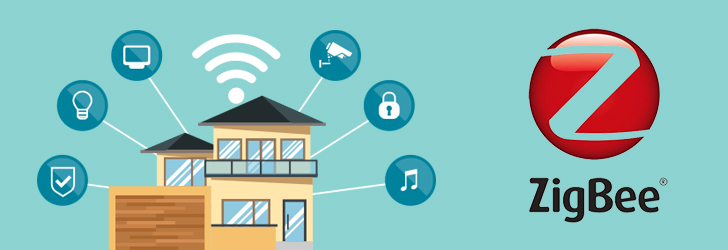
With a plethora of high data rate communication standards not suitable for communicating with sensors and actuators, a system designer primarily looks for a standard to work effectively with low-power requirements and low-latency. Though it was initially built as an alternative to Bluetooth because of its inefficacy to work in certain applications, ZigBee is best suited for IoT devices including industrial automation, embedded systems, home automation, etc.
What is ZigBee
ZigBee is based on IEEE (Institute of Electrical & Electronics Engineers) 802.15.4 Standard which lays down specifications for the low rate wireless personal area network. ZigBee is primarily used for two-way communication between a sensor and a control system. Like Bluetooth and Wi-Fi, it is a short-range communication and offers connectivity up to 100 meters. On the other end, Wi-Fi and Bluetooth are high data rate standards which support the transfer of media files, software, etc.
ZigBee technology supports the transfer of data coming from the sensors at a rate of about 250 kbps. It operates at various frequencies such as 868 MHz, 902 – 968 MHz, and 2.4 GHz. Since it requires low power from the device, the battery life is significantly improved.
Architecture of a ZigBee Network
A ZigBee network consists of three devices – coordinator, router, and an end device. An end device can be a smart thermostat, television, door, CCTV cameras, etc. There should be at least one coordinator in a network as it acts as a bridge and root for the entire network. Along with performing various data transfer operations, a coordinator also stores and handles information. It is supported by the routers which act as intermediary devices allowing the data to pass to and fro via them to other devices. The number of coordinators, routers, and end devices in a ZigBee network depends on the type of topology implemented in the network such as mesh, star, tree, hybrid, etc.
Out of four layers in a ZigBee device, Physical Layer & MAC are defined by IEEE 802.15.4 Standard while the remaining two layers i.e. Network Layer & Application layer are defined by ZigBee’s own network. Physical layer performs various modulation and demodulation tasks for signals being sent and received continuously. Media Access Control (MAC) in ZigBee is responsible for the successful transfer of data by using Carrier Sense Multiple Access Collision Avoidance (CSMA/CA). In addition, MAC layer can also transfer beacon frames along with the data to synchronize the communication between two devices.
Network layer looks after network operations such as setting up a network, connecting to a device, routing the incoming data, device configurations, etc. Application layer allows a device and an application to interface with the network layer for data management and communication between devices.
Application of ZigBee Devices
With being the most suitable communication method for IoT devices, ZigBee has found its application in many automated systems such as:
- Industrial Automation systems being used in manufacturing, packaging, etc.
- Home Automation systems including lights, doors, locks, thermostat, surveillance, etc.
- Grid Monitoring involving temperature monitoring, power management, fault locating, etc.
- Smart Metering for preventing the power theft, providing energy consumption response, pricing support, etc.
Share this post
Leave a comment
All comments are moderated. Spammy and bot submitted comments are deleted. Please submit the comments that are helpful to others, and we'll approve your comments. A comment that includes outbound link will only be approved if the content is relevant to the topic, and has some value to our readers.

Comments (0)
No comment